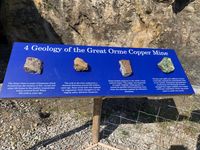Geology
Königsstuhl, Rügen, Germany
One of the most important hallmarks of the Baltic coast is the Königsstuhl (King's Chair), which is the best-known chalk cliff in Jasmund National Park on the Baltic Sea island of Rügen. These chalk cliffs are thought to have been formed over millions of years through a combination of geological processes, which primarily involve sedimentation of the remains of microscopic marine organisms.
The chalk cliffs of Rügen are therefore a vast composition of marine organisms, like coccolithophores and foraminifera, that lived in the ancient seas that covered the region millions of years ago. Over time, the calcium carbonate skeletons of these organisms accumulated on the seafloor and gradually compacted and solidified into layers of chalk rock.
Subsequent tectonic movements and shifts in the Earth's crust caused the uplift of the chalk deposits, which would eventually formi the cliffs that we call the Königsstuhl today. Erosion by the wind, rain, and sea, further sculpted the cliffs, creating the distinctive formations and coastline of these white cliffs in Jasmund National Park. The Königsstuhl's striking vertical cliffs rise up to approximately 387 feet (118 meters) above the Baltic Sea level. Big chunks of cliff fall off, now and again, especially after the winter, when the expansion of freezing water exacerbates the forces that cause small cracks to become unstable.
These formidable cliffs have inspired many artists, including the renowned German Romantic painter, Caspar David Friedrich, who is known for his landscapes and portrayals of nature. The Kings Chair, with its steep white cliffs, became a recurring motif in Friedrich's work, symbolizing the sublime power and tranquility of the natural world.
In his paintings, Friedrich often depicted solitary figures contemplating the vastness of the landscape from elevated vantage points, such as the Kings Chair, symbolizing the smallness of man against the overwhelming backdrop of nature, that was typical for the Romantic Era. In this Era, many writers and painters depicted ruins in their works, as a symbol of the transience and fleetingness of life. This is mirrored in the ruins, that can be found in the Potsdam Park of Sanssouci castle, that were made on purpose and are not real ruins.
Other Excursions
- a surface mine, where there are many fossils
- Hintertux Glacier, Austria
- Great Orme bronze age copper mines in Llandudno, Wales, UK
- Slate mines in Wales, UK
Documentaries (selection):
Museum of Nature South Tyrol - Lebendige Berge - Die Geologie Südtirols (living mountains, the geology of South Tyrol)
Museum of Nature South Tyrol - Südtirol unter Eis - Eine Spurensuche (South Tyrol under Ice - Searching for Traces of the Past)
SWR - Spuren im Stein - Der Hunsrück, Geschichte und Entdeckungen (Traces in Stone - the Hunsrück, History and Discoveries)
Terra X History - Expedition Europa – Geburt eines Kontinents (Expedition Europe - Birth of a Continent)
